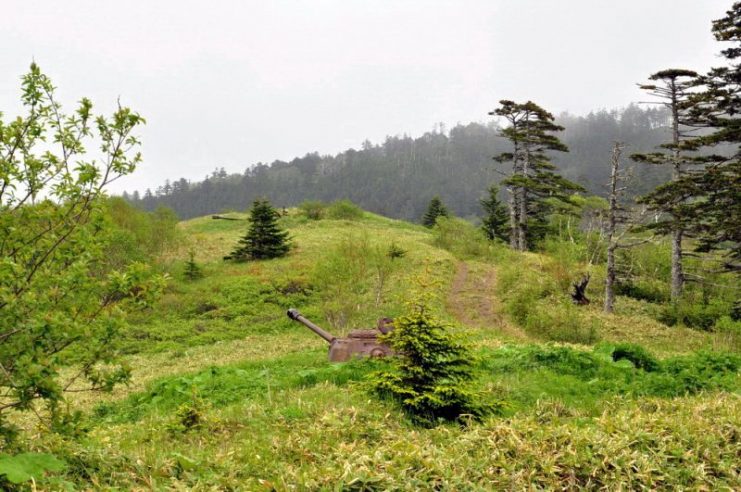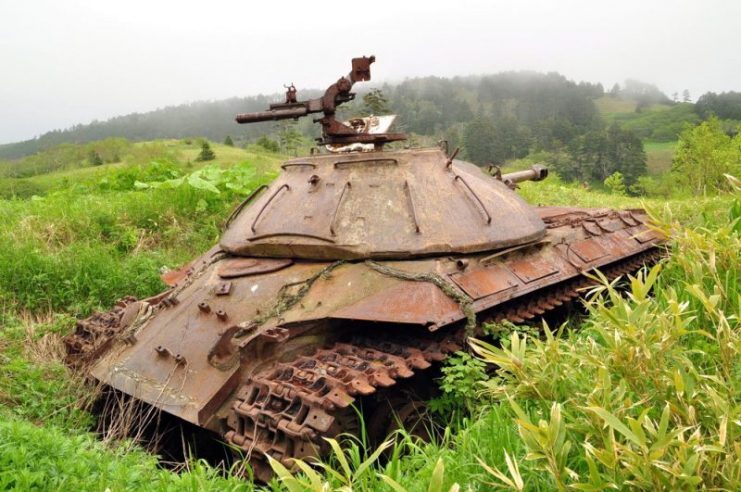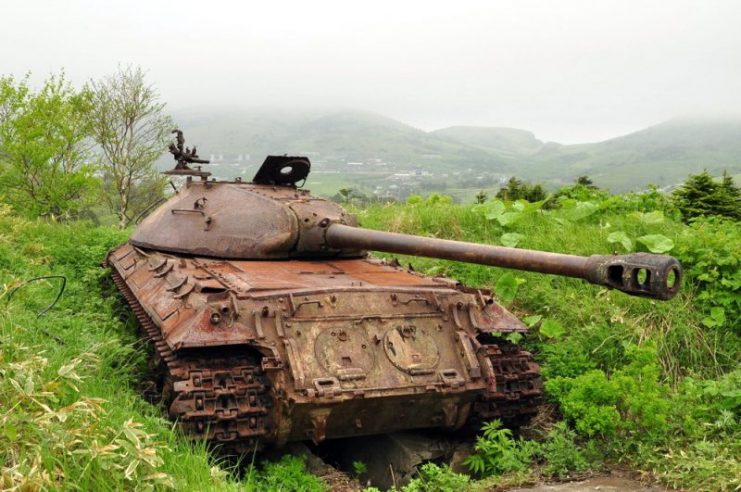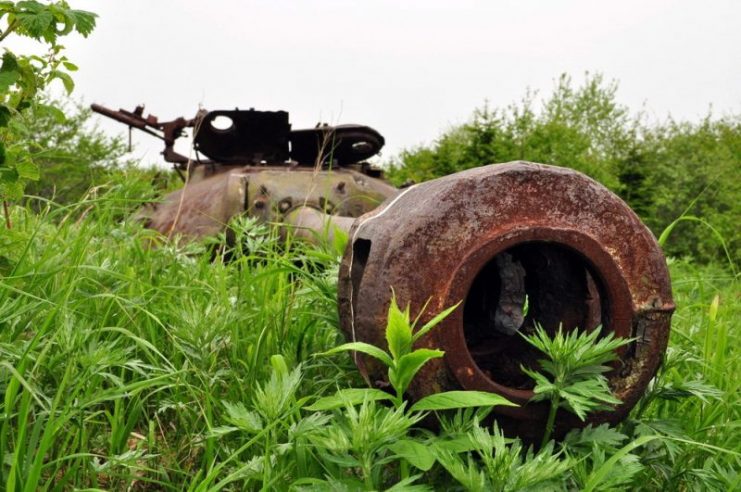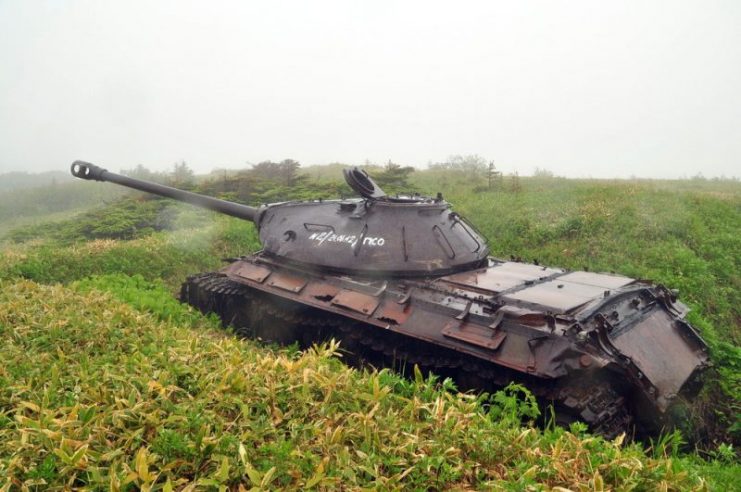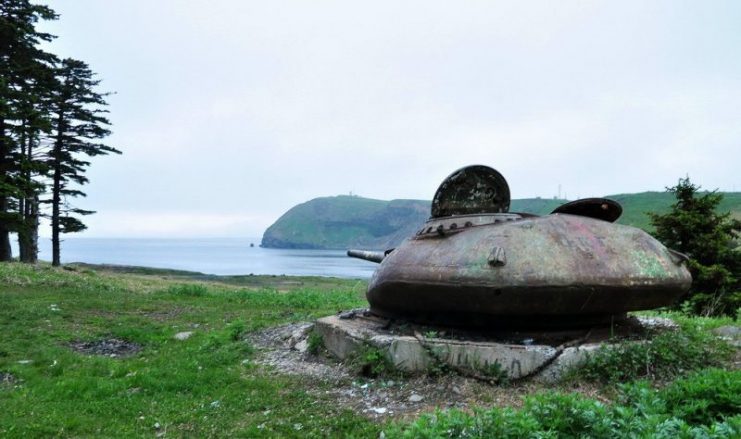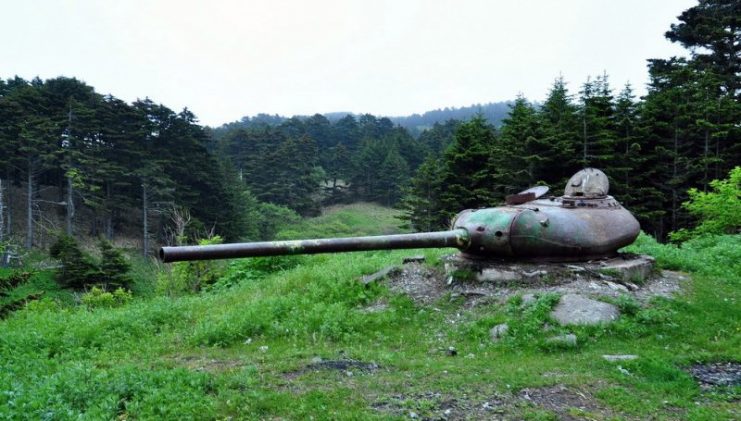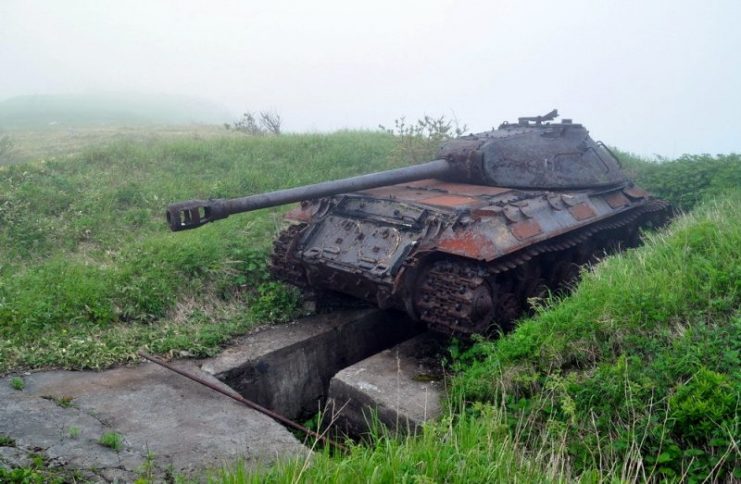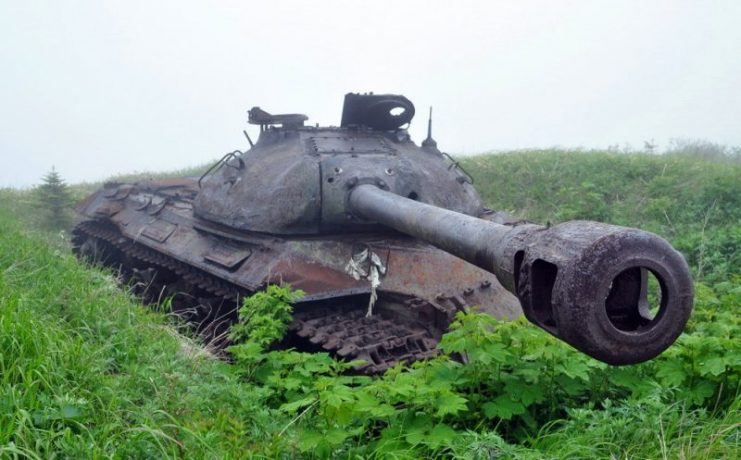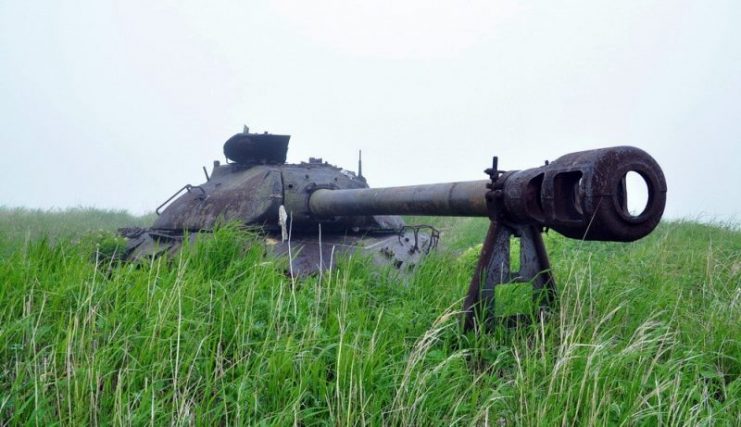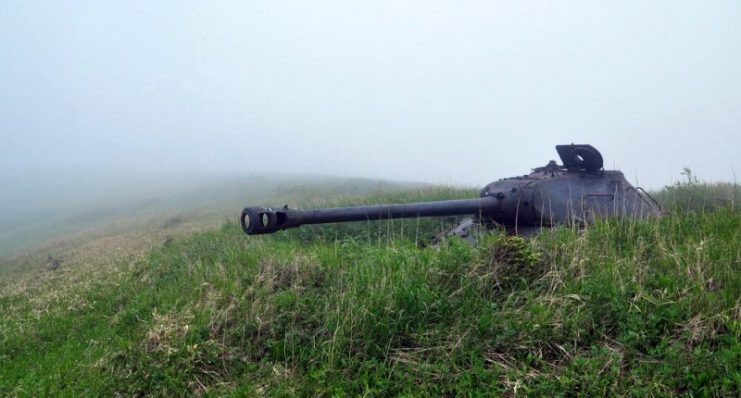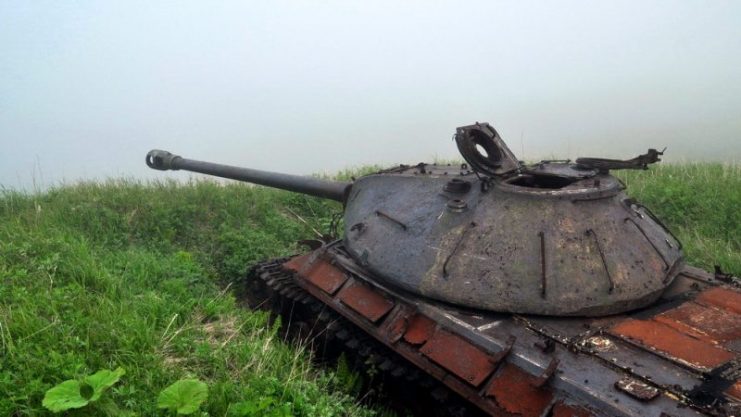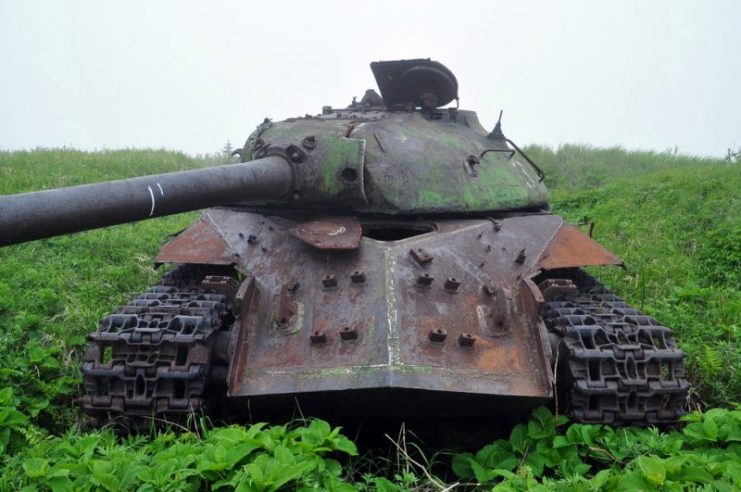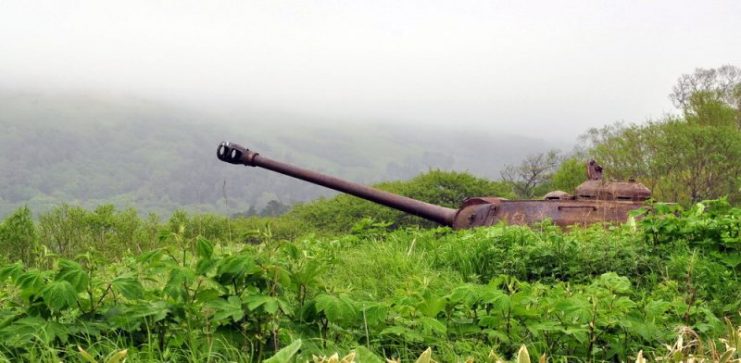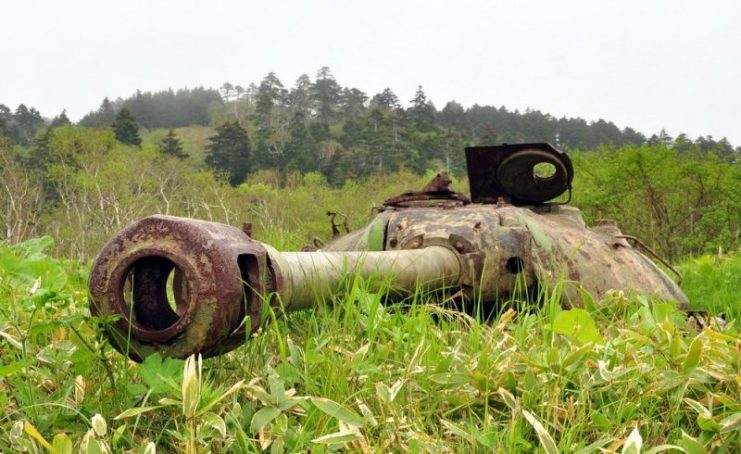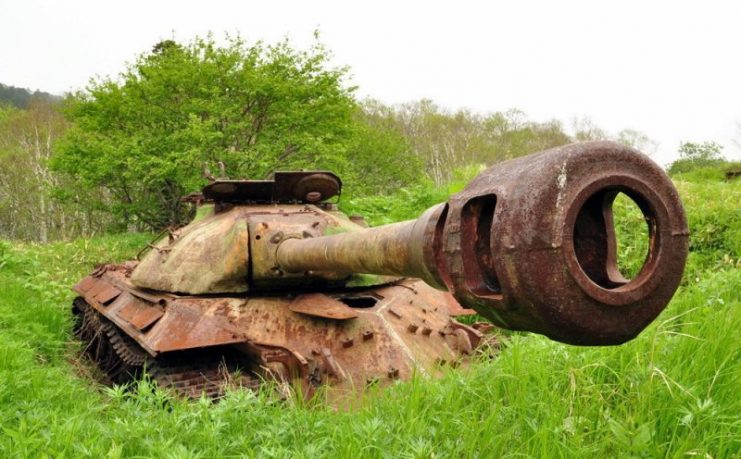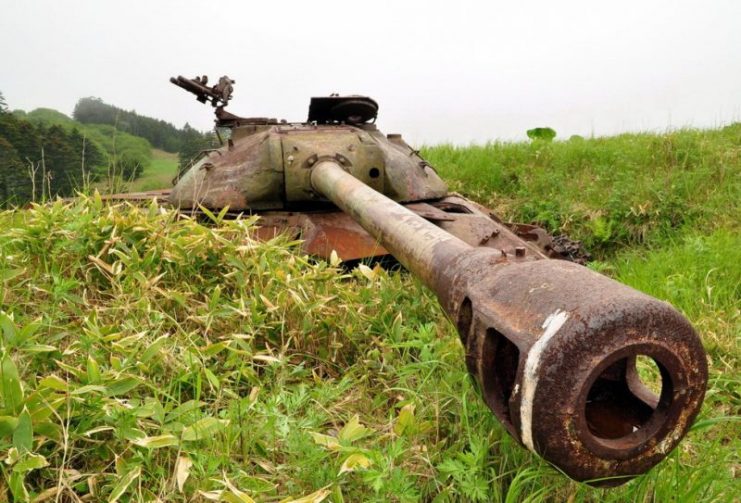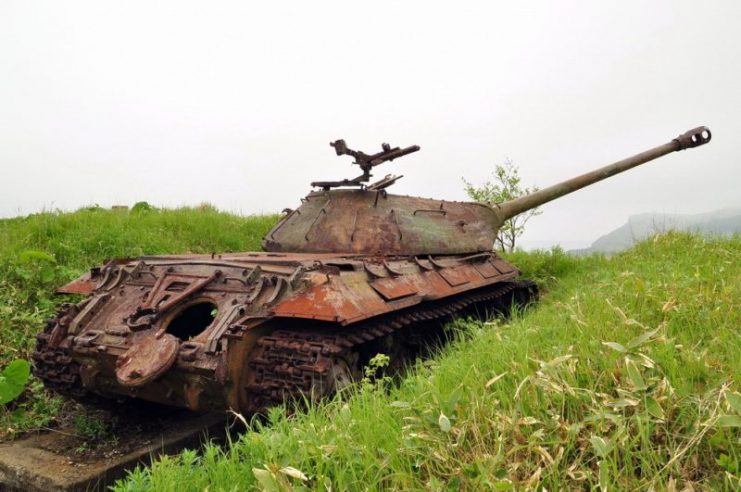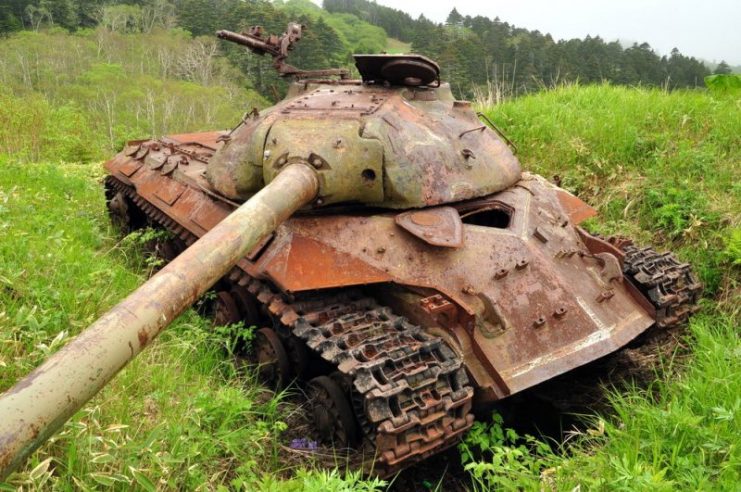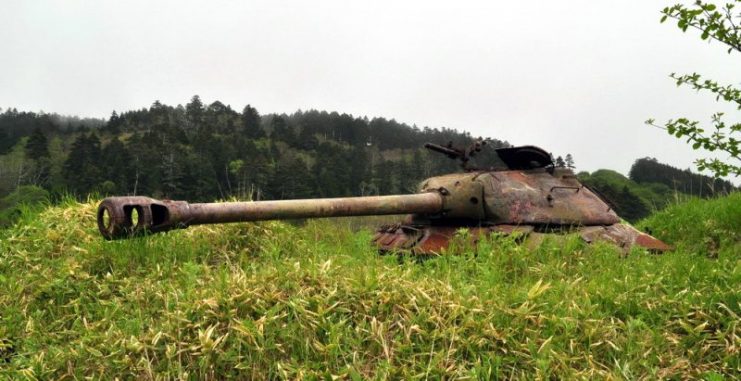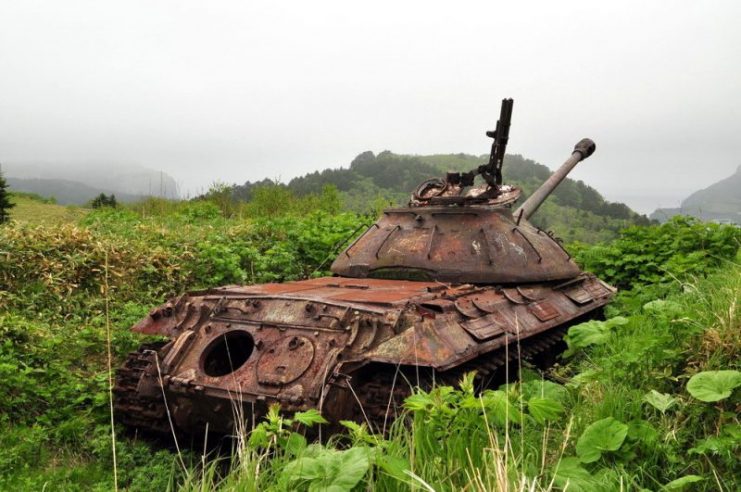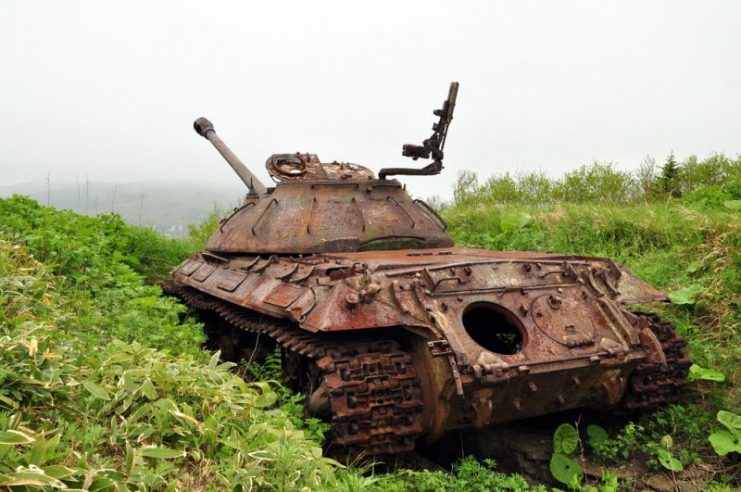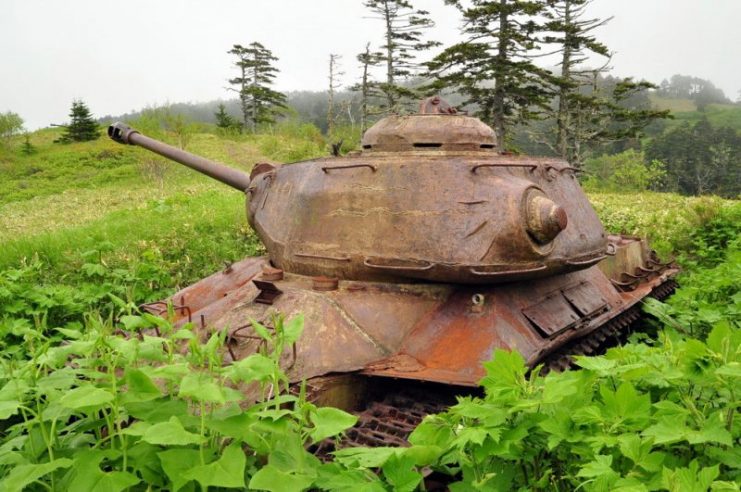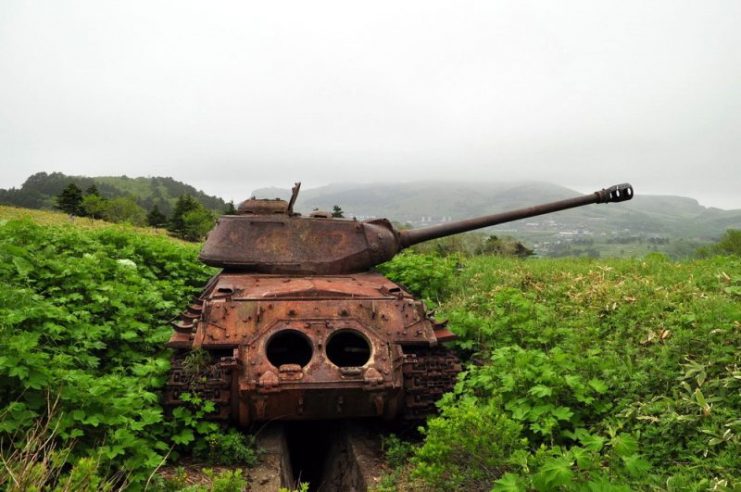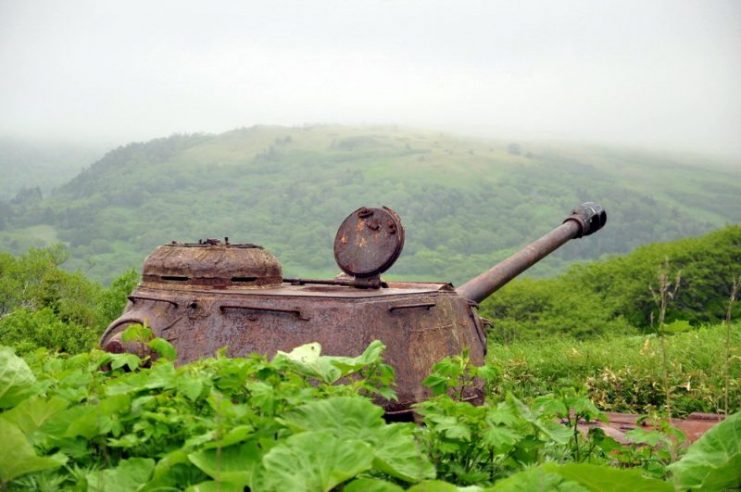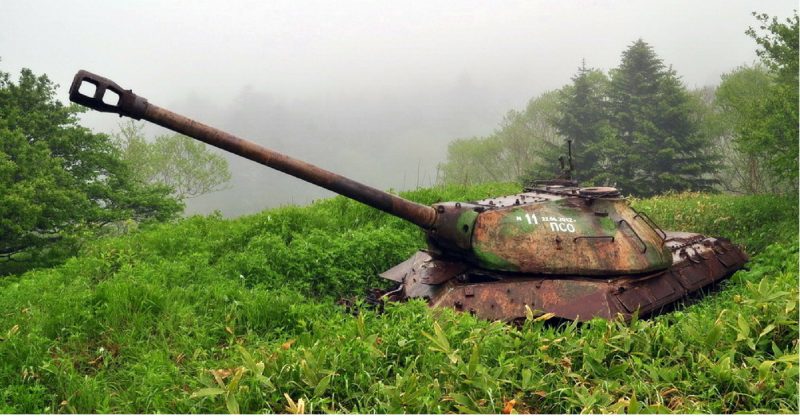Shikotan Island lies on the further rims of the Russian Federation on East, as a part of Kuril Islands. It’s a hilly island with the highest altitude of 412 meters (~450 yards). In the Köppen classification, the climate is evaluated as maritime mild, under the influence of monsoons. We can find there only two settlements: Malokurilskoye and Krabozavodskoye.
Back in World War II, the island also known as Shpanberg was a part of the Empire of Japan. As a part of the Manchurian Strategic Offensive Operation, the situation changed in September 1945 when over 800 Soviet troops invaded it, not even a month after the official declaration of war between USSR-IJ.
Japanese garrison, in the strength of 4,000 soldiers, capitulated without a shoot. The local population on the island at the end of the war numbered 1,038 (over 2000 now). There never was an official peace treaty signed between Japan and Russia, mainly because of Kuril Islands dispute.
Shikotan Island is claimed by both Russia and Japan, which leaves the matters unresolved and makes political relations between those two slightly sour. Officially, it’s administered by the Russian Federation up until now.
First outsiders arrived on the Island at the beginning of the XVIII century, when Japanese from Hokkaido started their expanse. First Russians arrived on there during the Second Kamchatka Expedition 1733-43.
Over hundred years later, in 1855, Russian Empire was weakened by the Crimean War and ceded Southern Kurils to Tokugawa shogunate (Emperor Kōmei). The Treaty of Shimoda was the first treaty between the Russian Empire and the Empire of Japan.
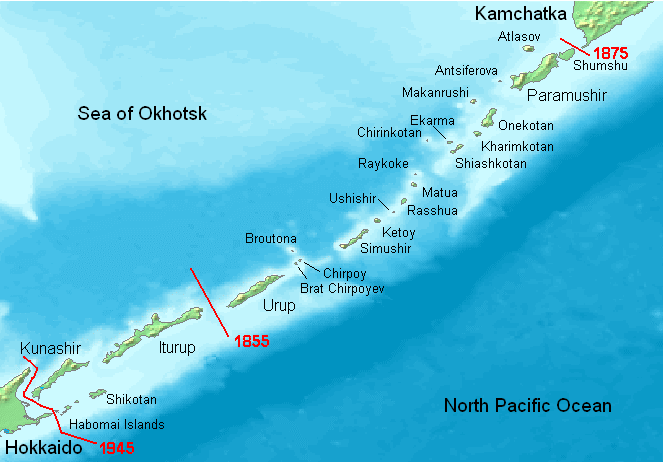
The Empire of the Sun surrendered on August 15, 1945. The official declaration was signed two weeks later by Japanese foreign affairs minister Mamoru Shigemitsu, on September 2, 1945, aboard USS Missouri (BB-63).
At the turn of August-September, United States Army Air Force sent over the Kuril Islands two B-24 Liberators on a reconnaissance mission, but both were intercepted and pushed back – a very early foretaste of the upcoming Cold War.
The Red Army didn’t intend to leave their newly conquered lands. We don’t know how strong their garrison in the area was, but we know what’s left. Few masterpieces of the Soviet’s engineering – IS-2 and IS-3 tanks.
The IS Heavy Tanks family is a successor of the famous KV-series tanks. IS-2 entered service in 1944 and was the most powerful tank of the Allies and Soviet arsenal at the time. In total, 3,854 were built. IS-3 was pressed into service too late and didn’t see combat during the war. The first 25 units left the factory in April 1945.
The only battle experience they had was during the Hungarian Revolution of 1956, where few were destroyed. In total, 2,311 were built. Most of the tanks from Iosef Stalin family were scrapped. Many saw service aboard, mainly in Egyptian, North Korean, Chinese and Vietnamese armies. Some are still in museums all over the world, some are standing proudly as a monument of old times.
Abandoned Soviet armor on Shikotan is in a relatively good shape. During the period of USSR, not only IS heavy tanks were present, as some T-54 and T-55 also stationed on the grassy hills. Those in the pictures are left to rust with no chance of restoration.
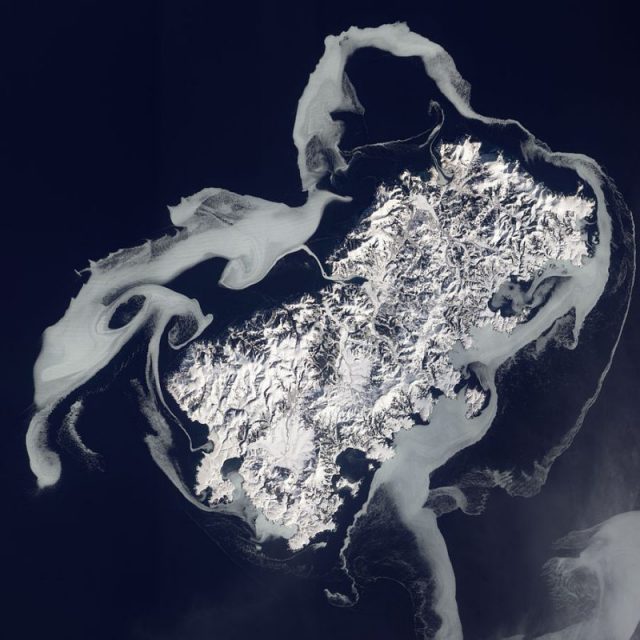
All photos below by Yury Maksimov / http://www.maksimov.su
Photos
